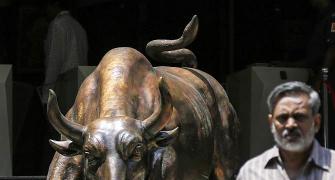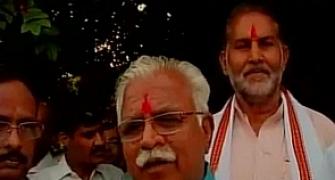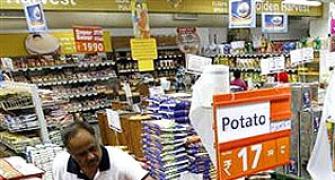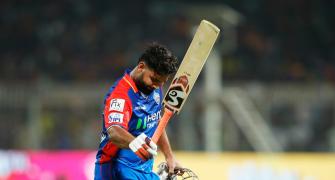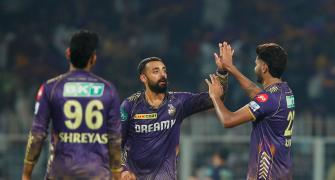 Falling crude oil prices have helped lawyer Pratik Mehra get off the bus and back behind the wheel of his car, cutting his travel time to work by a third.
Falling crude oil prices have helped lawyer Pratik Mehra get off the bus and back behind the wheel of his car, cutting his travel time to work by a third.
In China, a short hop across the Himalayas, slumping consumer demand has sparked fears of deflation as it wrestles with flagging global economic growth.
But in India, lower prices are allowing consumers like Mehra who drive much of the economy to open their wallets after years of fierce inflation.
It is a welcome change for the 41-year-old father of two, who disliked using the crowded and erratic bus service to get to work in Gurgaon, a business city near New Delhi.
Until a few months ago, rising petrol prices had left him with no choice. "While cars were becoming cheaper, petrol prices were skyrocketing," he said as he refuelled his car in downtown New Delhi.
"We would joke that banks should also start offering loans to buy petrol."
As well as making the lives of millions of middle class Indians easier, the sharp drop in Brent crude prices since June is a boon for Prime Minister Narendra Modi in his fight to revive an economy growing at its slowest rate since the 1980s.
Signs of a strong pickup in hiring by companies are adding to the rosier outlook for Indian households.
The biggest external vulnerability the Indian economy has is its exposure to fluctuations in oil prices, given that it imports more than 70 percent of its crude needs.
Falling prices have quickly cooled inflation and boosted foreign reserves. Cheaper oil allowed Modi to end government price caps on diesel without it hurting consumers.
In fact, the decision on Saturday led to an immediate 5.7 percent fall in pump prices for the fuel that drives rural tractors and urban SUVs.
The move was aimed at cutting subsidy costs and attracting energy investment, and it is expected to bring down road and rail freight costs at a time when the summer harvest is arriving into markets, helping further cool price pressures. India is also among the world's biggest importers of coal and gold, both of which have become cheaper this year.
"Overall, lower commodity prices further support our view that India is entering a 'goldilocks period' of lower inflation and higher growth," said Sonal Varma, an economist at Nomura.
Consumers like Mehra seem to agree, as they pack out India's shops and malls during the festival season of Diwali, a time for buying new cars, jewellery and electronic goods.
A poll published in the Hindustan Times newspaper on Tuesday said 61 percent of urban middle-class consumers felt they had more money than last year, and 50 percent planned to spend more.
That's good for Asia's third-largest economy: private spending accounts for 60 percent of gross domestic product, so getting consumers to spend more is essential to end its longest spell of sub-5 percent growth in a quarter of a century. EXPORTS Not every aspect of the global economy bodes well for India.
Weak growth among many of the world's largest economies is bad news for Indian exporters, who contribute less to the economy than in China, for example, but are nonetheless an important pillar of growth.
That, said an editorial in the Business Standard newspaper on Monday, makes it all the more urgent that Modi uses the opportunity offered by lower commodity prices to take further steps such as ending subsidies on fertilizer.
After a cautious first few months in office, Modi has used a new injection of political capital flowing from two state election victories for his Bharatiya Janata Party at the weekend to push forward with reforms, tinkering with stifling labour rules and signalling an imminent opening up of the state-run coal monopoly.
For now, the upside appears to offset damage done to exports by weaker global demand.
The oil rout has strengthened the outlook for the country's current account and fiscal balances, auguring well for the rupee at a time when speculation about US interest rates has triggered volatility in many emerging currencies.
Every $10 fall in the price of a barrel of oil is estimated to narrow India's current account gap by 0.5 percent of GDP and improve the fiscal deficit by 0.1 percent, making it easier to trim the spending gap to a seven-year low this fiscal year.
"This should go a long way to help insulate India against swings in external conditions," said HSBC economist Frederic Neumann.
A crucial test of Modi's willpower will come if crude prices recover. Consumer and wholesale price inflation dropped to a multi-year low in September on softer food and fuel prices. A return to high oil prices could quickly reverse the scenario and tempt the government to fiddle with diesel and petrol prices again.


